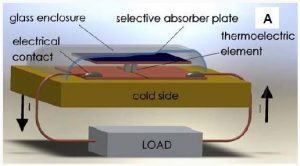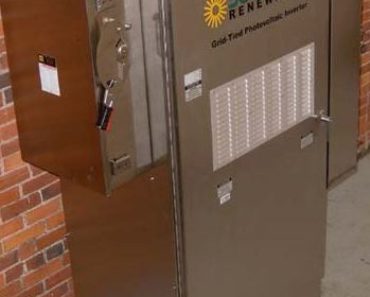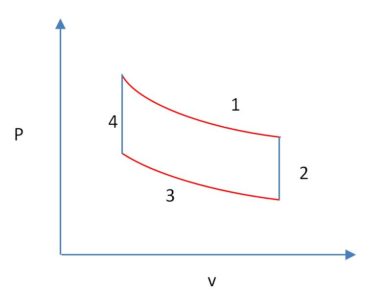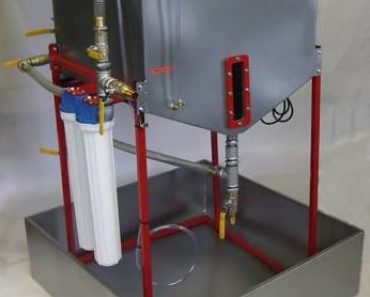A promising new technology is emerging in the solar renewable spectrum that uses Sun’s heat to produce electricity. The product is called Solar Thermo-electric generator (STEG) and uses Seebeck effect for heat to electricity conversion. Just like PV, this technology is also completely solid state, which makes the resulting products both durable and reliable. At present, the lab efficiency for STEG product is around 5% but has the potential to be doubled (10%).
When compared to high performance PV modules ( with efficiency >20%), the efficiency of STEG is almost 4 times lower. This brings us to the question, why is this technology being pursued when even at its full potential , it will be half as efficient the current PV systems?
The answer to this is provided by Prof Gang Chen, head of Mechanical engineering department at the MIT. He explains “STEG technology uses mostly metals. The absorbing surface is made of Aluminium and Copper and is coated by light absorbing materials. STEG uses very small amount of semiconductor material which is more expensive than metals”. He adds “In PV, semiconductors material make up most of the panel and metal is used sparsely as charge collector. This means there is huge potential of reducing the cost of electricity generation”. This idea is echoed by NREL (National Renewable Energy Laboratory), who suggest that cost of electricity generation with STEG can be as low as $0.5/Watt. For a domestic user, this means that a 200 Watt system would cost only 100 USD.
There are two additional advantages of STEG technology. Firstly, it can work in conjunction with a solar water heating system. In China alone there are 100 million square meters of solar hot water panels. Research is currently underway on developing hybrid systems that produce both hot water and electricity using STEG technology. The economics of such systems look extremely favourable on paper.
The second advantage of STEG is its ability to utilize stored energy. Solar PV systems work only in day light hours. Whereas if energy is stored as heat during the day, STEG technology can convert that stored thermal energy into heat during the night. Thus this technology provides flexibility of energy usage.
Technology
The Solar TEG are made up of a two metal absorber plate that sandwich semi-conductor material between them. Ceramic plates can also be used instead of metal. The hot side metal plate at the top is additionally coated with selective material that enhances absorptivity. Nickel plated copper can be used as absorbing surface. The cooler side is exposed to ambient air. The semi-conductor materials, that can be used for TEG are Bismuth Telluride, Lead Telluride or Silicon Germanium. Each of them have low thermal conductivity and high power factor. The greater the temperature gradient, the more electric current is produced. Solar energy can also be concentrated to increase the temperature difference. Similarly heat sink is also employed on the cold side to increase the temperature gradient. Note that normal TEG available in the market can withstand temperatures of up to 570 °C.
At the MIT, the hot absorbing surface of STEG has been kept in a glass vacuum chamber to make use of greenhouse effect to increase the temperature (see picture).
STEG technology is often confused with hybrid PV-TEG technology. The latter is fairly useful, particularly for PV modules installed in hot climates but is expensive. A detailed article on Thermo Electric Generators including the prices can be accessed through this link.
Please feel free to share this article using the buttons below.
Useful Links
Solar Thermo-Electric Generation for Micropower Applications







